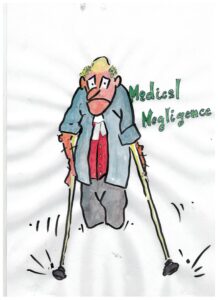Meaning of “relating to”
- 2016-11-29
- By whiggs
- Posted in Contractual Interpretation
In Tooheys Ltd v Commissioner of Stamp Duties (NSW) [1961] HCA 35; (1961) 105 CLR 602, Taylor J, at 620 said of that phrase:
“.. the expression … is extremely wide but it is also vague and indefinite. Clearly enough it predicates the existence of some kind of relationship but it leaves unspecified the plane upon which the relationship is to be sought and identified. That being so, all that a court can do is to endeavour to seek some precision in the context in which the expression is used.”
His Honour went on to say, at 620, that “relating to” in the context there considered was not the ‘equivalent of “referring to”‘; the relationship between two different things must be based upon some more substantial ground.
In Oceanic Life Ltd v Chief Commissioner of Stamp Duties (NSW) [1999] NSWCA 416; (1999) 168 ALR 211; 154 FLR 129 Fitzgerald JA said, at [56]:
“The width of the phrase ‘relating to’ is undoubted. Lord Macnaghten stated that ‘[t]here is no expression more general or far-reaching’: Commissioner of Inland Revenue v Maple & Co (Paris) Ltd [1908] AC 22 at 26. See also Fountain v Alexander [1982] HCA 16; (1982) 150 CLR 615 at 629; Colakovski v Australian Telecommunications Corporation [1991] FCA 152; (1991) 29 FCR 429; Secretary, Department of Foreign Affairs and Trade v Boswell [1992] FCA 321; (1992) 36 FCR 367; PMT Partners Pty Ltd (In Liq) v Australian National Parks and Wildlife Service [1995] HCA 36; (1995) 184 CLR 301 at 329-330, although the addition of the words ‘or depending on’ was presumably intended to give the combined phrase ‘relating to or depending on’ a wider operation than ‘relating to’. The difficulties of construction presented by such language have also been noted. Taylor J observed that ‘… the expression ‘relating to’ … is … vague and indefinite …’ and ‘… leaves unspecified the plane upon which the relationship is [to be] sought and identified’: Tooheys Ltd v Commissioner of Stamp Duties [1961] HCA 35; (1961) 105 CLR 602 at 620. One area of debate has been whether, in particular legislation, a relationship need or need not be ‘direct’ or ‘direct and immediate’: see, for example, Ausfield Pty Ltd v Leyland Motor Corporation of Australia Ltd (No 2) [1977] FCA 6; (1977) 14 ALR 457 at 460, 462; 30 FLR 477 at 480, 483; Re Dingjan; Ex parte Wagner [1995] HCA 16; (1995) 183 CLR 323 at 364 and 370; Joye v Beach Petroleum NL [1996] FCA 1552; (1996) 67 FCR 275 at 285; see also Perlman v Perlman [1984] HCA 4; (1984) 155 CLR 474. Overall, the position judicially adopted has been that the operation of the phrase ‘relating to’ is determined by the statutory context and purpose: Butler v Johnston [1984] FCA 118; (1984) 4 FCR 83 at 87; Hatfield v Health Insurance Commission (1987) 15 FCR 487 at 491.”
In Black’s Law Dictionary (5th ed.), the meaning of “relates to” includes “to have bearing or concern”, “to pertain” and “to bring into association with or connection”.
SEARCH BLOG POSTS
LATEST BLOG POSTS
- Updated product safety mandatory reporting guidance for suppliers now available
- Pleading fraud – cause and effect is essential
- Does the Trustee’s right of indemnity have priority over the right of beneficiaries in relation to assets?
- Rules of war (in a nutshell) | The Laws Of War
- MH370 Final Report
Past Blog Posts
- December 2021
- September 2021
- August 2021
- May 2021
- April 2021
- March 2021
- August 2020
- February 2020
- September 2019
- February 2019
- December 2018
- July 2018
- April 2018
- December 2017
- May 2017
- February 2017
- December 2016
- November 2016
- October 2016
- September 2016
- August 2016
- April 2016
- March 2016
- October 2015
- September 2015
- August 2015
- May 2014
- April 2014
- March 2014
- January 2014
Categories
- Appeals
- Artificial Intelligence
- Aviation law
- Banking and Finance Law
- Blogs
- Civil Liability Act
- Class Actions
- Coding for lawyers
- common law
- Consumer Claims (TPA)
- Contract Law
- Contractual Interpretation
- Criminal law
- Deeds
- Docassemble
- duty of care
- Engineering Law
- Equity
- Evidence
- Exclusion Clauses
- Execution of documents
- Expert Witness
- featured
- Financial Services
- Fraud
- Fundraising (Chapter 6D)
- General comment
- Home Building Law
- Insurance
- Legal drafting
- Local Court
- Medical Negligence
- MH370
- Motor Accidents
- Negligence
- Occupiers negligence
- Other
- Personal Injury
- Personal Property Securities (PPSA)
- Pleading
- Practice & Procedure
- Products Liability
- Property
- Real Property
- Reasons for a decision
- Securitisation
- Security (Mortgages & Charges)
- Sentencing
- Swaps & Derivatives
- Teaching
- Transactional Law
- Transfer of financial assets in transactions
- Trusts & Trustee Law
- Uncategorized
- War and Weaponry
- Witnesses
SEARCH BLOG POSTS
LATEST BLOG POSTS
- Updated product safety mandatory reporting guidance for suppliers now available
- Pleading fraud – cause and effect is essential
- Does the Trustee’s right of indemnity have priority over the right of beneficiaries in relation to assets?
- Rules of war (in a nutshell) | The Laws Of War
- MH370 Final Report
Past Blog Posts
- December 2021
- September 2021
- August 2021
- May 2021
- April 2021
- March 2021
- August 2020
- February 2020
- September 2019
- February 2019
- December 2018
- July 2018
- April 2018
- December 2017
- May 2017
- February 2017
- December 2016
- November 2016
- October 2016
- September 2016
- August 2016
- April 2016
- March 2016
- October 2015
- September 2015
- August 2015
- May 2014
- April 2014
- March 2014
- January 2014
Categories
- Appeals
- Artificial Intelligence
- Aviation law
- Banking and Finance Law
- Blogs
- Civil Liability Act
- Class Actions
- Coding for lawyers
- common law
- Consumer Claims (TPA)
- Contract Law
- Contractual Interpretation
- Criminal law
- Deeds
- Docassemble
- duty of care
- Engineering Law
- Equity
- Evidence
- Exclusion Clauses
- Execution of documents
- Expert Witness
- featured
- Financial Services
- Fraud
- Fundraising (Chapter 6D)
- General comment
- Home Building Law
- Insurance
- Legal drafting
- Local Court
- Medical Negligence
- MH370
- Motor Accidents
- Negligence
- Occupiers negligence
- Other
- Personal Injury
- Personal Property Securities (PPSA)
- Pleading
- Practice & Procedure
- Products Liability
- Property
- Real Property
- Reasons for a decision
- Securitisation
- Security (Mortgages & Charges)
- Sentencing
- Swaps & Derivatives
- Teaching
- Transactional Law
- Transfer of financial assets in transactions
- Trusts & Trustee Law
- Uncategorized
- War and Weaponry
- Witnesses




